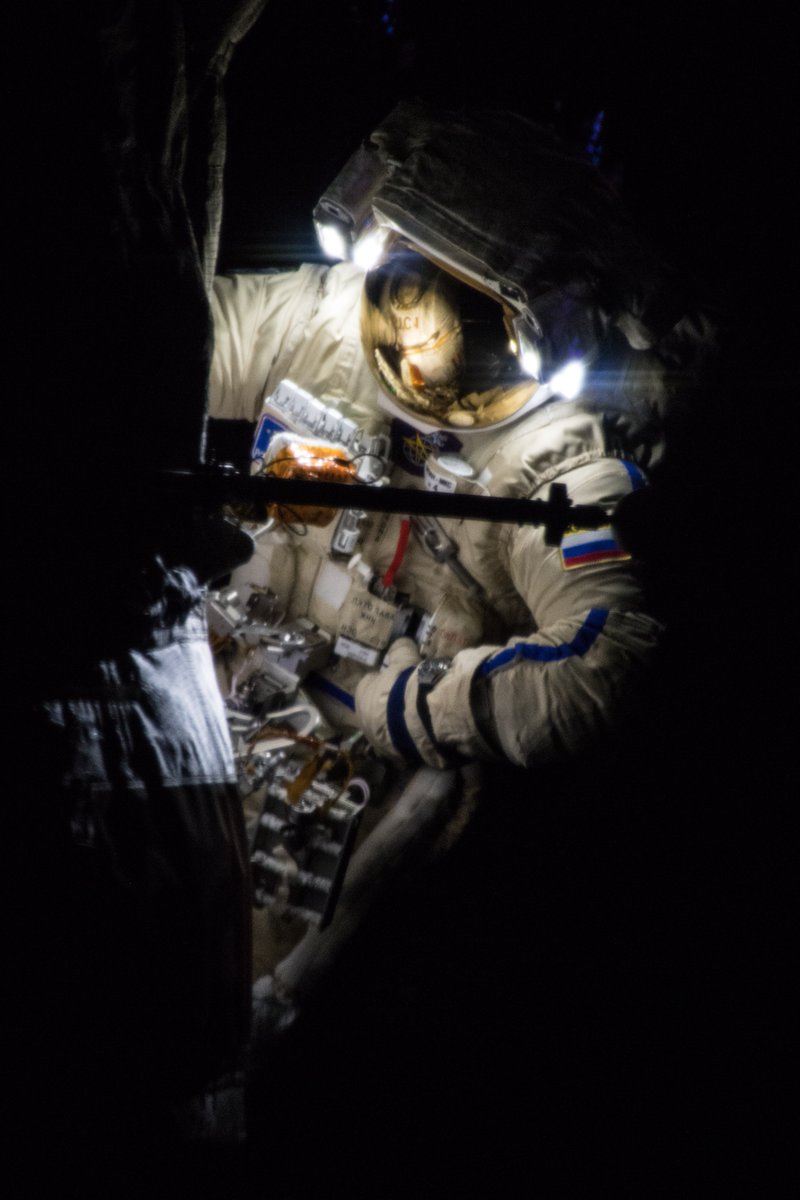Russian spacewalk runs into overtime during ‘Icarus’ experiment installation
/Two Russian cosmonauts stepped outside the International Space Station for more than 7.5 hours to deploy several small satellites and install an experiment designed to monitor animal migration.
Expedition 56 flight engineers Oleg Artemyev and Sergey Prokopyev were tasked with Russian EVA 45, which officially began at 16:17 UTC Aug. 15, 2018, when the Pirs docking compartment's airlock hatch was opened. The excursion was expected to last about six hours.
Artemyev was designated extravehicular crew member 1, or EV1, and wore the Russian Orlan spacesuit with red stripes, while Prokopyev, EV2, wore the suit with blue stripes.
The first order of business was to deploy four small satellites that were brought up on Progress MS-08 in February 2018 and Progress MS-09 in July 2018. Those craft were Tanyusha-SWSU 3 & 4 and Siriussat 1 & 2, respectively.
Developed at South-West State University in Kursk, Russia, Tanyusha-SWSU 3 & 4 are Russian experimental radio satellites that were constructed using a 3D printer. According to Gunter’s Space Page, they have two primary objectives, to achieve “self-organization of autonomous vehicles” and to measure the density of the vacuum of space at its orbital altitude via a vacuum gauge. Each vehicle is 4.8 kilograms and powered by batteries charged by solar cells.
The second pair, Siriussat 1 & 2, were developed by the Research Institute of Nuclear Physics of Moscow State University to study space weather. According to Gunter’s Space Page, they were assembled by schoolchildren in cooperation with SPUTNIX, a Russian private space company. Each of these tiny spacecraft are 1.3 kilograms and are also powered by batteries charged by solar cells.
All four were deployed by hand from the Pirs docking compartment in the opposite direction of the space station’s direction of travel, angled slightly downward.
The next task was the hardest: the installation of the International Cooperation for Animal Research Using Space, also known as “Icarus.”
This experiment is a collaborative venture between the German Aerospace Center and Roscosmos and is designed to study animal migratory patterns on Earth that were tagged with GPS receivers. As such, the orbital component of this study includes an antenna and GPS hardware. According to the Max Planck Institute for Ornithology, Icarus will allow the worldwide tracking of “all kinds of animal migration flows” and will be brought into service over the coming day and weeks.
“The Icarus project is a successful example of the excellent Russian–German collaboration on the scientific use of the ISS,” said Johannes Weppler, the project manager at the German Aerospace Center, in a press release.
According to the Max Planck Institute for Ornithology, Roscosmos and the German Aerospace Center have now been collaborating on the project’s implementation for over five years.
“We’re proud to have been able to incorporate Russian experience with the operation and construction of experiments on the ISS into Icarus,” said Vasiliy Savinkov, the project leader at Roscosmos, in press release on the website for Max Planck Institute for Ornithology. “At the same time, we’re giving our scientists the opportunity to establish themselves as world leaders in this area of research. It’s also exciting to consider possible future applications of the Icarus technology, such as tracking freight containers to make their transport more reliable or locating chipped pets.”
Its installation was on the port side of the Zvezda service module about halfway between that side’s solar array and crew compartment window. While successful, the process did not go smoothly and caused the spacewalk to get behind schedule by some 90 minutes, increasing the planned six-hour spacewalk to more than 7.5 hours.
It involved installing the Icarus boom on a universal work platform and route cables to various panels on the service module. Next, the antenna was installed at the end of the boom connecting two cables to the antenna itself. More cables were then routed along the service module to an electrical panel at the forward end of Zvezda before several more cables were connected to the antenna from the boom.
Once that was completed, a GoPro was installed on the side of Zvezda to observe Icarus unfold its panels and antenna.
The GoPro was retrieved and the work space cleaned up before the final task of the spacewalk began: the retrieval of several text exposure cassette from Poisk and Pirs.
Once that final task was completed, the duo made their way back inside the Pirs docking compartment and closed its hatch, officially ending the spacewalk at 00:03 UTC Aug. 16. This brought the total duration for the spacewalk to 7 hours, 46 minutes.
Overall, this was the 212th spacewalk in support of ISS assembly, maintenance and upgrades, according to NASA. It was also Artemyev’s third and Prokopyev’s first in their respective careers.
NOTE: While this article was written by Derek Richardson, it was originally published at SpaceFlight Insider. Feel free to head over there to read all the stuff they write about!





